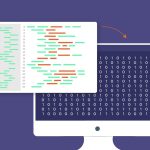Debugging is an essential skill for every programmer, but it can be frustrating and time-consuming. With the right mindset and strategies, debugging can be a smooth and even rewarding process.
1️⃣ Understanding Bugs: What Are They? 🤔
A bug is an error, flaw, or unintended behavior in your code. Bugs can appear for many reasons, including:
- Syntax errors (e.g., missing parentheses, typos)
- Logic errors (e.g., incorrect calculations, infinite loops)
- Runtime errors (e.g., division by zero, null references)
- Performance issues (e.g., slow execution, memory leaks)
Every bug has a cause and a solution—you just need to find it! 🕵️♂️
2️⃣ Stay Calm: Debugging is a Normal Part of Coding 🧘♀️
Bugs are not a sign of failure—they are part of the coding process. Even experienced developers spend a lot of time debugging. Instead of getting frustrated, adopt a problem-solving mindset.
- ✅ Accept that debugging is normal.
- ✅ Stay patient and logical.
- ✅ Avoid guessing—use structured debugging techniques.
3️⃣ Reproduce the Bug: Find Out What Went Wrong 🔄
Before fixing a bug, you need to understand when and why it happens. Follow these steps:
- Observe the error: What is the program doing wrong?
- Check error messages: If there’s an error message, read it carefully!
- Identify inputs and conditions: What actions trigger the bug?
- Reproduce consistently: If you can recreate the bug, you can fix it faster.
4️⃣ Read the Error Message (Don’t Ignore It!) 📜
Error messages are your best friends. Example of a Python error message:
TypeError: unsupported operand type(s) for +: 'int' and 'str'🔹 Translation: You’re trying to add a number (int) and a text string (str), which is not allowed.
Fix:
num = 5
text = "10"
result = num + int(text) # Convert text to number5️⃣ Use Print Statements & Logging 🖨️
One of the easiest ways to debug is by printing out values at different points in your code.
for i in range(5):
print(f"Loop iteration: {i}")For larger applications, use logging:
import logging
logging.basicConfig(level=logging.DEBUG)
logging.debug("This is a debug message")6️⃣ Use a Debugger: Step Through Your Code 🐞
Every programming language has debugging tools:
- 🔹 Python:
import pdb; pdb.set_trace() - 🔹 JavaScript: Chrome Developer Tools (F12)
- 🔹 VS Code & PyCharm: Built-in debugging tools
7️⃣ Check for Common Mistakes 🧐
- ✅ Spelling errors – Variables or function names must match exactly
- ✅ Incorrect data types – Mixing strings and numbers causes issues
- ✅ Off-by-one errors – Loops might stop too early or run too long
- ✅ Mismatched brackets – Missing {}, (), or [] can break your code
8️⃣ Comment and Document Your Code 📝
Well-documented code is easier to debug:
# Calculate total price by adding tax to the base price
total_price = base_price + tax_amount9️⃣ Take a Break: Fresh Eyes Find Bugs Faster 🚶♂️
If you’ve been staring at the same error for hours, step away for a bit. A short walk, coffee break, or even a night’s sleep can help you see the problem more clearly.
🔟 Ask for Help (But Explain Clearly!) 🆘
If you’re stuck, don’t hesitate to ask for help. However, explain the problem properly to get useful responses.
How to ask for help effectively:
- ✔️ Show your code (a minimal example)
- ✔️ Explain what you expected vs. what happened
- ✔️ Include error messages
Great places to ask:
- 🔹 Stack Overflow
- 🔹 Reddit /r/learnprogramming
- 🔹 Discord coding communities
Conclusion: Debugging is a Superpower 🦸♂️
Debugging isn’t just about fixing mistakes—it’s about understanding and improving your code.
🚀 Remember:
- ✅ Bugs are normal – Don’t panic!
- ✅ Read error messages – They guide you.
- ✅ Use print statements or a debugger.
- ✅ Check for common mistakes.
- ✅ Take breaks and ask for help when needed.
With practice, you’ll become a debugging master—and nothing will stop you from writing great code! 💪🔥


